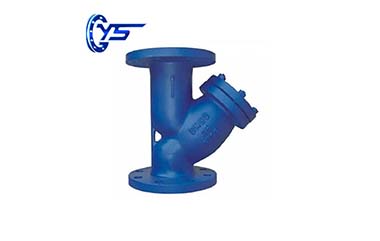
If you spend a lot of time on our news, you will find that it is full of some impressive products. Our product line continues to grow, and our manufacturing and manufacturing services and capabilities are also growing to meet the growing needs of customers. A brief glance at our "Product Library" section reveals that we have made some outstanding filters and valves.
As the world becomes more and more complex, people are easily distracted from simple and amazing things in our lives. Just like turning on the faucet, releasing clean water, turning on the refrigerator, taking out cold drinks, or turning the ignition key in the car, this exquisite combination of steel, copper, rubber, and integrated circuits will take you away from point A to comfortably reach point B.
It is important to remember some simple things that make all this possible, and with this in mind, we decided to launch some products that do not seem to be complicated but can make the processes required in our modern life work better. more efficient. One of them is a simple "Y Type Strainer".
The name "Y-filter" comes from its configuration and is most commonly used in pressurized lines, gases or liquids. They can also be used under suction or vacuum conditions. Y-type filters are suitable for applications that require a small number of solid particles and are not frequently cleaned. If solids are easily flushed out of the screen and the fluid can be discharged to the atmosphere, the blowdown valve on the discharge port will allow cleaning without removing the screen without interrupting the process.
By definition, filters provide a method of mechanically removing solids from flowing liquids. They achieve this by using perforated metal, mesh, or wedge wire to tighten the element.
We often forget that the installation of Y-type filters is not a cost, but an investment in the protection of downstream mechanical equipment (such as turbines, pumps, heat exchangers, nozzles, condensers, meters, and traps). These are usually one of the most expensive components in the process and can be damaged by deposits, rust, pipe scale, and other foreign debris.
Y-type filters can be used in horizontal or vertical positions, while most basket filters are designed for horizontal or slightly inclined piping applications. You must pay attention to the direction of the debris collection chamber and the drainage (sewage) connection of the Y-type filter. The filter must be installed as low as possible.
The AY filter installed in the vertical pipe must be installed with its screen facing down in order to collect the sediment in the debris collection chamber.
A single-sided filter is usually used (the opposite of a double filter is just a filter). During this process, the process can be closed for a period of time to replace or clean the filter.
Y-type filters and many basket filters can be cleaned automatically. If a blowdown valve is added, the filter can be flushed without stopping the flow-through or dismantling the pipeline.
Contractors and engineers often mistakenly believe that Y-type filters and basket filters cannot be used for steam service. In many cases, basket filters and Y filters perform equally well in steam service. When you order a filter for steam service, you must specify this item so that the manufacturer knows this. For steam, the housing can be provided with a special bottom that allows the accumulated debris to be blown out of the opening of the blowdown valve.
When liquid flows through the filter, the filter screen will block the flow, so the pressure of the liquid leaving the filter will be lower than the pressure before entering the filter. This is called the "pressure drop" of the filter.
Basket filters with a size of approximately 4 inches generally produce a smaller pressure drop than Y filters. Due to the required thickness and thus the high cost of high-pressure filters, basket filters are generally not constructed for pressures above 1,500 psi. On the other hand, Y filter can be used for working pressure of 6,000 psi or higher.
Cast Y filters can be installed in pipelines or workflow applications by "tightening" them on a pipe or bolting them to a "flange".
Y type thread strainer can be made of a variety of materials, including cast iron, cast bronze, cast steel, cast stainless steel, cast alloy 20, cast chromium-molybdenum. Flange Y filter can be cast iron, ductile iron, cast steel, cast stainless steel, cast LCC.
Although Y filters are not always the most gorgeous part of the production process, they are an essential part. In this day and age, we have tools to analyze and record small details of variables including downtime, please make sure you remove the debris and particles that will reduce efficiency or cause premature failure to ensure that these expensive downstream components reach their potential.
Previous: Butterfly Valves - How it work
Next: What Is a Casting Valve?
Copyright © Hebei Yaosheng IM & EX Trading Co.,Ltd. All Rights Reserved |Sitemap | Technical Support: 
